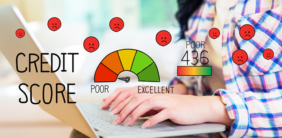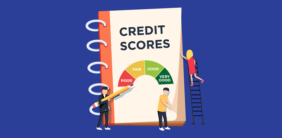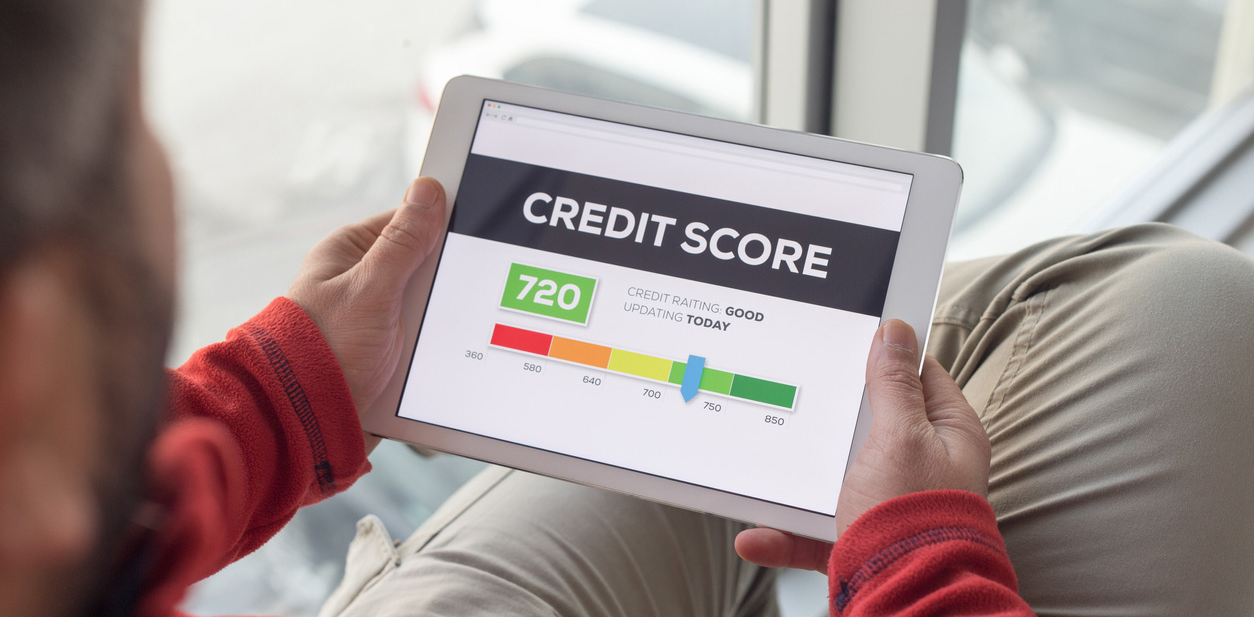When consumer debt becomes a thorn in your side, it may be time to develop a plan of attack.
In total, American households carry $1.35 trillion in auto loan debt and $890 billion in credit card debt, according to data from the Federal Reserve Bank of New York.
Debt can impact more than just your finances — it can affect your peace of mind. A 2018 Northwestern Mutual study found that 42% of Americans feel anxious because of debt. The best way to kick it to the curb depends on your situation. Below are seven strategies that can help you tackle your balances.
Debt Snowball vs. Debt Avalanche
Both debt snowball and debt avalanche help you decide which debt to pay off first, next, and last. How you prioritize debt differs with each method.
1. Debt snowball
The debt snowball is the debt repayment strategy where you pay off your smallest debt first and work your way towards the highest debt balance last. Early success paying off the small balances can build up the momentum you need to pay off larger balances — like a snowball rolling down a hill.
Here are the steps to setting up a debt snowball:
- Step 1: Comb through your budget to locate extra funds that you can devote to debt repayment.
- Step 2: List your debts from smallest to largest balance on a debt payoff chart or spreadsheet.
- Step 3: Make minimum payments on all of your debt and put extra funds towards the smallest balance that’s at the top of your priority list until it’s paid off.
- Step 4: Move on to the next smallest balance and so on until all debt is paid off.
The potential drawback of the debt snowball method is that your debt with the lowest balance may not necessarily have the lowest interest rate. So while you’re attacking your smallest balance, interest will accumulate on your high-interest debt. If you’re more concerned with getting rid of your most expensive debt, you may want to consider the debt avalanche method below instead.
2. Debt avalanche
The debt avalanche is the method where you focus on paying your highest interest debt first. The idea is to knock out your most expensive debt balances so the interest no longer burns a hole in your pocket.
Here are the steps to setting up a debt avalanche:
- Step 1: Comb through your budget to locate extra funds that you can devote to debt repayment.
- Step 2: List your debts from highest to lowest rate on a debt payoff chart or spreadsheet.
- Step 3: Make minimum payments on all of your debt and put any extra money you have towards the most expensive debt until it’s paid off.
- Step 4: Move on to the next debt on your list once the first debt is paid off.
When looking at the dollars and cents, the debt avalanche approach makes sense financially (pun intended) because of the savings. But if your debt with the highest rate is also a large balance, it can take a while for you to see the positive effect of payments on your debt, which can be discouraging.
How to Prioritize Debt: Snowball vs. Avalanche
Which is the best debt payoff method? There’s no right or wrong answer — you can do what’s best for you. You may pay more on high-interest debt while the snowball method works its magic, but the positive reinforcement that comes from getting rid of small balances first may be worth the cost.
As an example, let’s priortize how these credit cards and loans would be paid off according to each debt payoff method.
| Example Debt |
Credit Card A
- Interest Rate: 15.99%
- Balance: $2,000
|
Credit Card B
- Interest Rate: 21.99%
- Balance: $5,000
|
Car Loan
- Interest Rate: 5.49%
- Balance: $3,000
|
Student Loan
- Interest Rate: 6.08%
- Balance: $7,500
|
| Debt Snowball Method |
Debt Avalanche Method |
| In this method, you prioritize your debt by balance from lowest to highest.
Debt 1: Credit Card A — $2,000
Debt 2: Car Loan — $3,000
Debt 3: Credit Card B — $5,000
Debt 4: Student Loan — $7,500 |
In this method, you prioritize your debt by interest rate from highest to lowest.
Debt 1: Credit Card B — 21.99%
Debt 2: Credit Card A — 15.99%
Debt 3: Student Loan — 6.08%
Debt 4: Car Loan — 5.49% |
These payoff strategies look very different.
Instead of choosing one method, you could also try a hybrid strategy that includes elements of both. For example, you could pay off the lowest balance first to build up momentum and then start working on your high-interest debt next to save money.
Debt Payoff Products and Strategies
If you need help beyond the debt avalanche or snowball repayment methods above, here are five other strategies that can help reorganize your debt and lower your interest rate.
3. Debt consolidation
A debt consolidation is when you take out a new debt product, such as a credit card or loan, to pay off multiple balances so you only need to worry about one payment. You can do a consolidation with pretty much any product that lets you pay off debt in one lump sum. Here are some examples:
- Home equity loans (HELs) or home equity lines of credit (HELOCs): Home equity products are secured by your home and that often means they come with a better interest rate than unsecured loans, but there is a catch: If you default, you could lose your house.
- Debt consolidation loans: Often these loans are unsecured personal loans marketed as debt consolidation loan products by banks and online lenders.
- Credit card balance transfers: Some credit card companies will let you consolidate several credit card balances onto one new credit card with a low-interest introductory promotion.
The right option for you will depend on your credit profile and debt-to-income ratio. Compare multiple debt consolidation loans across several lenders to see where you can get the best offer.
Where do student loan consolidations fit into the mix?
You’re not alone if you have student loan debt. In 2019, 69% of students who graduated with a Bachelor’s degree owed an average of $29,900 in student loans. The good news is, federal student loans can be consolidated through the Direct Consolidation Loan program for easier repayment.
Private lenders like Discover offer student loan consolidation products as well, but keep in mind that getting rid of your federal student loans means you’ll no longer qualify for benefits like deferment, forbearance, loan forgiveness, and income-based repayment plans.
4. Debt refinancing
A debt refinance loan can consolidate debt too, but its main purpose is to pay off existing debt with a new loan that has better terms. Mortgage or car loan refinancing can help you pay off debt faster because it can lower your interest rate. A lower interest rate means a larger portion of your monthly payment can go to paying down the loan principal.
Here are some numbers: In 2019, customers who refinanced their auto loans with RateGenius lowered their interest rate from 10.19% to 5.59%, on average. For a car loan of about $28,000 (the average amount refinanced in 2019), this interest rate reduction could offer $3,692.40 in total payment savings over a 60-month term. The rate you qualify for will depend on factors like your loan-to-value and credit score. If you’re upside down on the loan or you have poor credit, you may have trouble qualifying for a car refinance loan that has low fees and a competitive rate.
5. Debt settlement
A debt settlement is when you come to an agreement with your creditors to “settle” your debt for a lump sum. If you work with a debt settlement company, they usually tell you to stop making payments to creditors; instead, your payments go into a separate account while negotiations take place. While this may motivate a creditor to settle with you, the missed payments can cause your credit score to drop.
That’s not to say debt settlements are all bad — if you’re a skilled negotiator, you may be able to negotiate your own arrangement without adding a slew of missed payments to your report. Just make sure you get all agreements in writing and know that a creditor reporting the account as “settled” instead of “paid as agreed” can still negatively impact your score, according to Experian experts.
6. Debt repayment plan
If you’re feeling overwhelmed while juggling payments, it may be time to call in a professional to help. The National Foundation for Credit Counseling (NFCC) is an example of a non-profit organization that certifies counselors and agencies that offer financial guidance and debt repayment plans.
A NFCC certified financial counselor is different from a financial advisor who earns a commission on the products they sell or a financial planner who advises you on all areas, such as taxes, retirement, insurance, and more. The financial counselor’s focus will be creating your debt plan. They typically charge a one-time fee of up to $50 and a monthly fee in the $25 range, according to the NFCC website.
Under a debt repayment plan, a counselor reviews your budget to see how much you can put towards debt and they also try to negotiate a lower interest rate with your creditors. Then you make one payment to the agency and they pay creditors for you.
7. Bankruptcy
Filing bankruptcy may be the last resort if you owe more money than you’re capable of repaying. Chapter 7 and Chapter 13 are the types of bankruptcy most commonly filed by individuals. Here’s an overview of both:
- Chapter 7 is a liquidation of your non-exempt assets to repay your debt. (Exempt assets may include possessions like your car and items you need for work.) The debt remaining after the liquidation may be discharged.
- Chapter 13 sets up a repayment plan for your debt that often lasts from three to five years. After you make the agreed-upon payments during the debt repayment plan, the remaining debt may be discharged.
Bankruptcy won’t stay on your credit report forever: Chapter 7 takes ten years to fall off of your credit report while a Chapter 13 filing comes off after seven years.
Paying off Debt Isn’t One-Size-Fits-All
A debt payoff plan can vary from person to person. To come up with your own, write down all of your debt balances along with the interest rates to see where you stand. If you’re in over your head, it may be time to get some help. Consider reaching out to a non-profit counseling agency or an attorney if a creditor is attempting to take you to court over a debt. If your debt is manageable, using one (or several) of the strategies above can help you in your debt repayment journey.
About The Author
RateGenius
A better way to refinance your auto loan. RateGenius works with 150+ lenders nationwide to help you save money on your car payments. Since 1999, we've helped customers find the most competitive interest rate to refinance their loans on cars, trucks, and SUVs. www.rategenius.com
;)












